‘Valley of Death’: are the Swiss too tolerant of extreme sports?
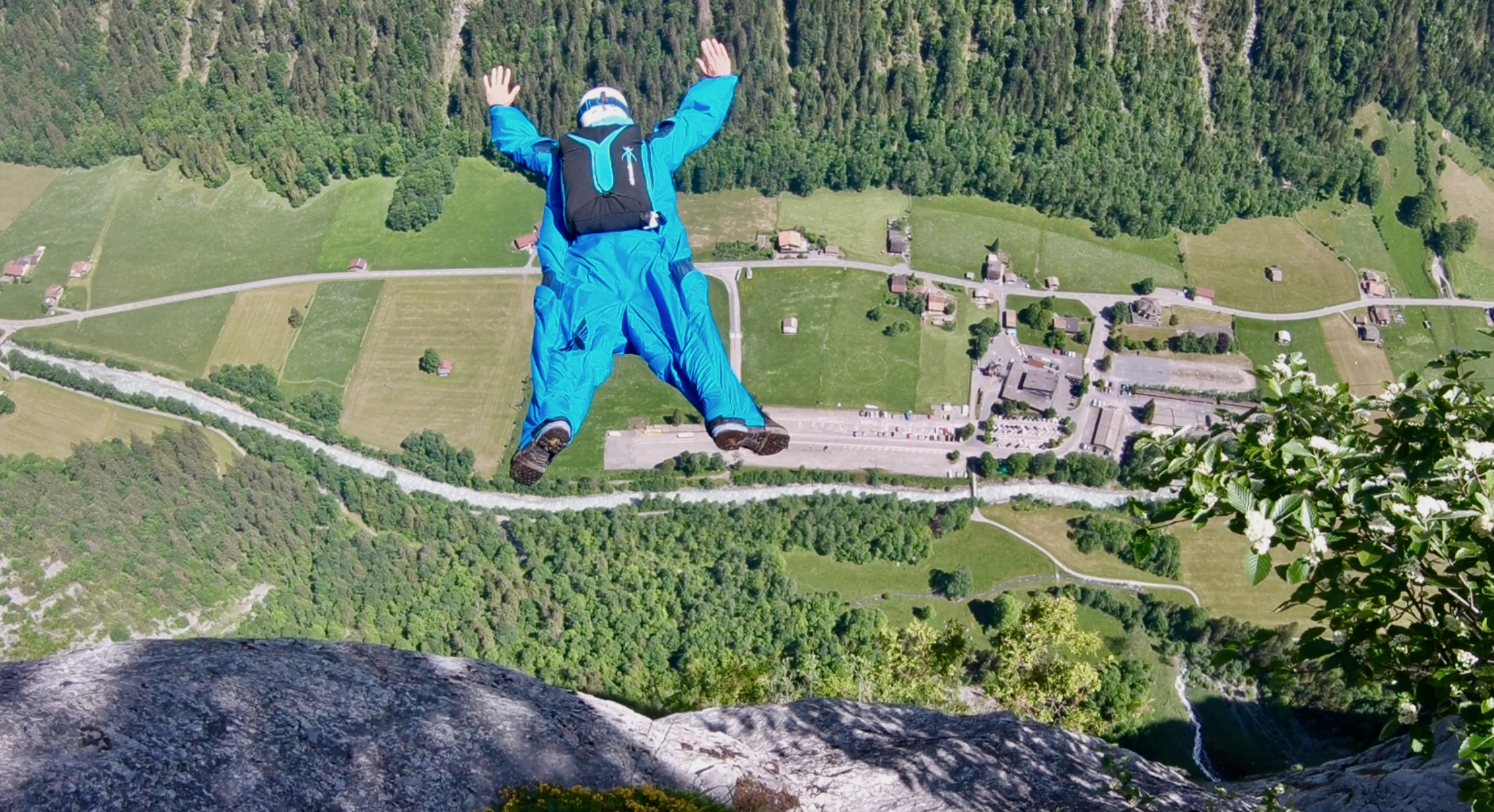
Every year thousands of tourists who love extreme sports head to Switzerland – often with fatal consequences. Does the Swiss tolerance of foreign adrenaline junkies ignore the feelings of locals who have to clean up the mess? Or would banning such sports make things even worse?
The Bernese Alps offer breathtaking landscapes all year round. In summer the peace of lush green pastures is disturbed only by the sound of cow bells; in winter there is the majestic beauty of pristine snow and rocky slopes.
In 2019, before the Covid pandemic, this scenery helped Switzerland attract more than 11.8 million visits by foreigners, who together spent $2.34 billion (CHF2.34 billion), a significant contribution to the economy.
Not everyone, however, is interested in calm and serenity. Thrill-seeking fans of adventure sports such as skydiving, BASE jumping, paragliding and climbing are drawn to the Swiss Alps – and the vertiginous cliff faces of the Lauterbrunnen Valley in particular.
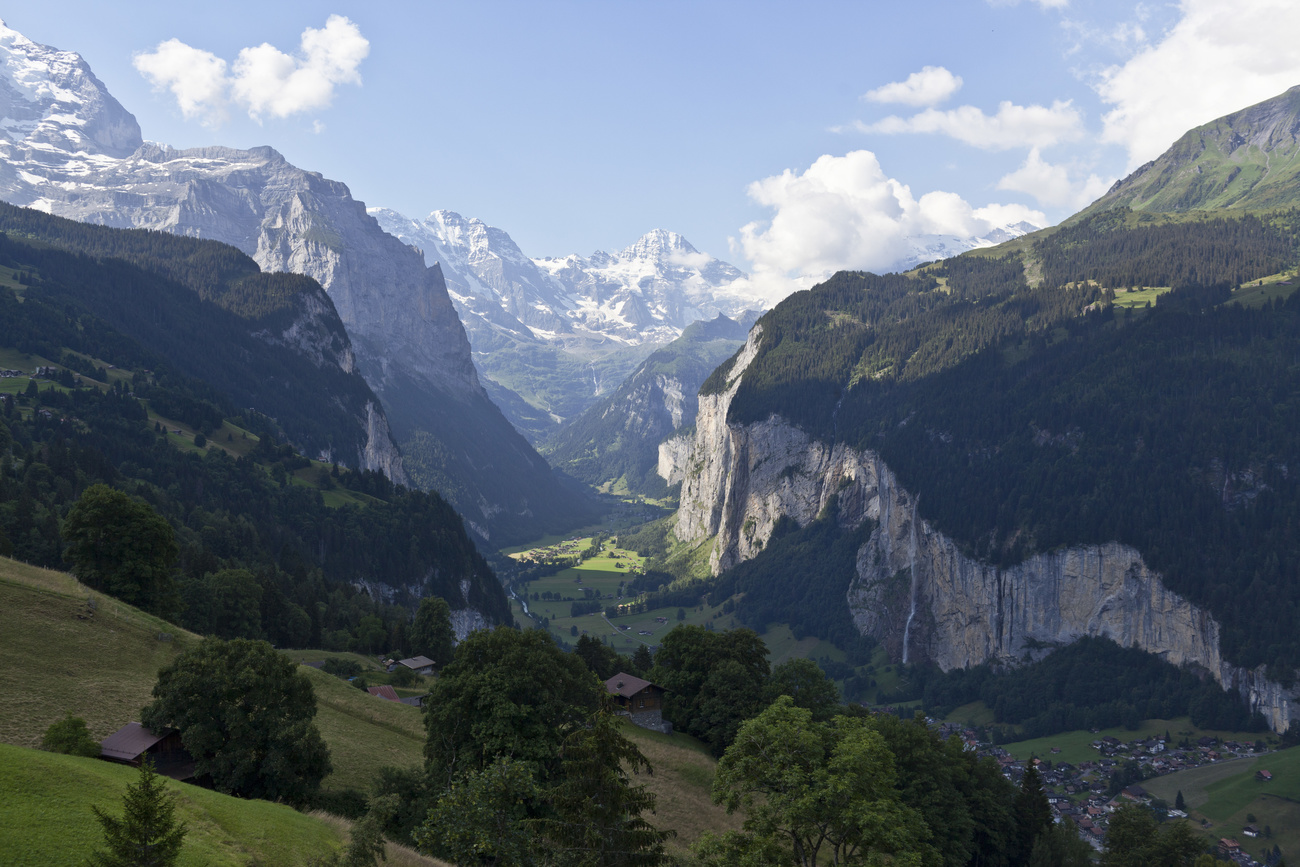
Between 2000 and 2022, 80 deaths or disappearances of extreme sports fans were recorded in Switzerland. Three-quarters were in the Lauterbrunnen region. Dubbed the “Valley of Death”, in May 2021 Lauterbrunnen inaugurated a memorial to the victims at the local cemetery.
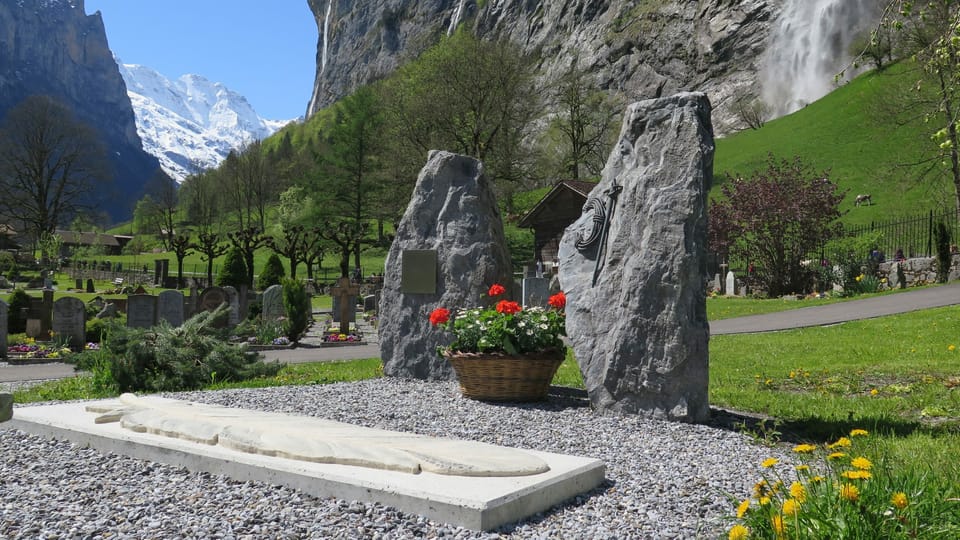
More
Swiss base-jumping mecca unveils memorial to dead thrill seekers
At least three BASE jumpers have died this season: in March a 48-year-old German; in July a 34-year-old Frenchman; and in September a 40-year-old Australian and, separately, a 35-year-old Brazilian who went missing and is presumed dead.
What they all had in common was a passion for the Alps and BASE jumping, a sport that involves jumping from fixed objects such as Buildings, Antennas (radio masts), Spans (bridges) and Earth (cliffs). They then use a parachute or wingsuit to – hopefully – glide to the ground. Lauterbrunnen’s sheer cliffs are perfect for BASE jumping.
That the local diocese decided to erect a memorial to the victims also had practical reasons. As tributes spread throughout the valley at the accident sites, crosses, candles and personal items in remembrance of the dead – such as helmets and goggles – were littering the landscape.
“This can put a lot of pressure on a place, however beautiful it is,” parish president Walter von Allmen told SWI swissinfo.ch at the time.
Bad reputation
Are these tributes reminders of an inconvenient truth? That Switzerland’s tolerance of foreign adrenaline might be too much to bear?
This is exactly what stood behind parliamentarian Margret Kiener Nellen’s motion in 2019 demanding BASE jumping and wingsuit jumping be banned. The government was forced to discuss the issue. With each death, she said, “the reputation of Switzerland and the Bernese Oberland as a tourist destination suffers worldwide”.
In Switzerland, the Federal Office of Civil Aviation regulates all air sports. BASE jumping and wingsuits are legally considered special forms of skydiving. Skydiving can be practised by those who have a licence.
In practice, however, BASE jumping is regulated by the practitioners themselves through associations such as the Swiss Base Association (SBA). In most European Union countries, on the other hand, every single jump must get an approval.
The Bernese tourism organisation does not promote BASE jumping as a leisure option, and around 2006 a temporary ban was even discussed to spare guests and residents the sight of the deaths.
‘Not so deadly’
In its response to Kiener Nellen’s motion, the government said there was no reason for a ban because “in absolute terms, the number of people who die in BASE jumping accidents is low compared with other leisure activities such as mountaineering”.
Indeed, when compared with other causes of death in sports, in absolute numbers BASE jumping might seem “not so deadly”. For instance, last year 46 people drowned in Swiss rivers and lakes.
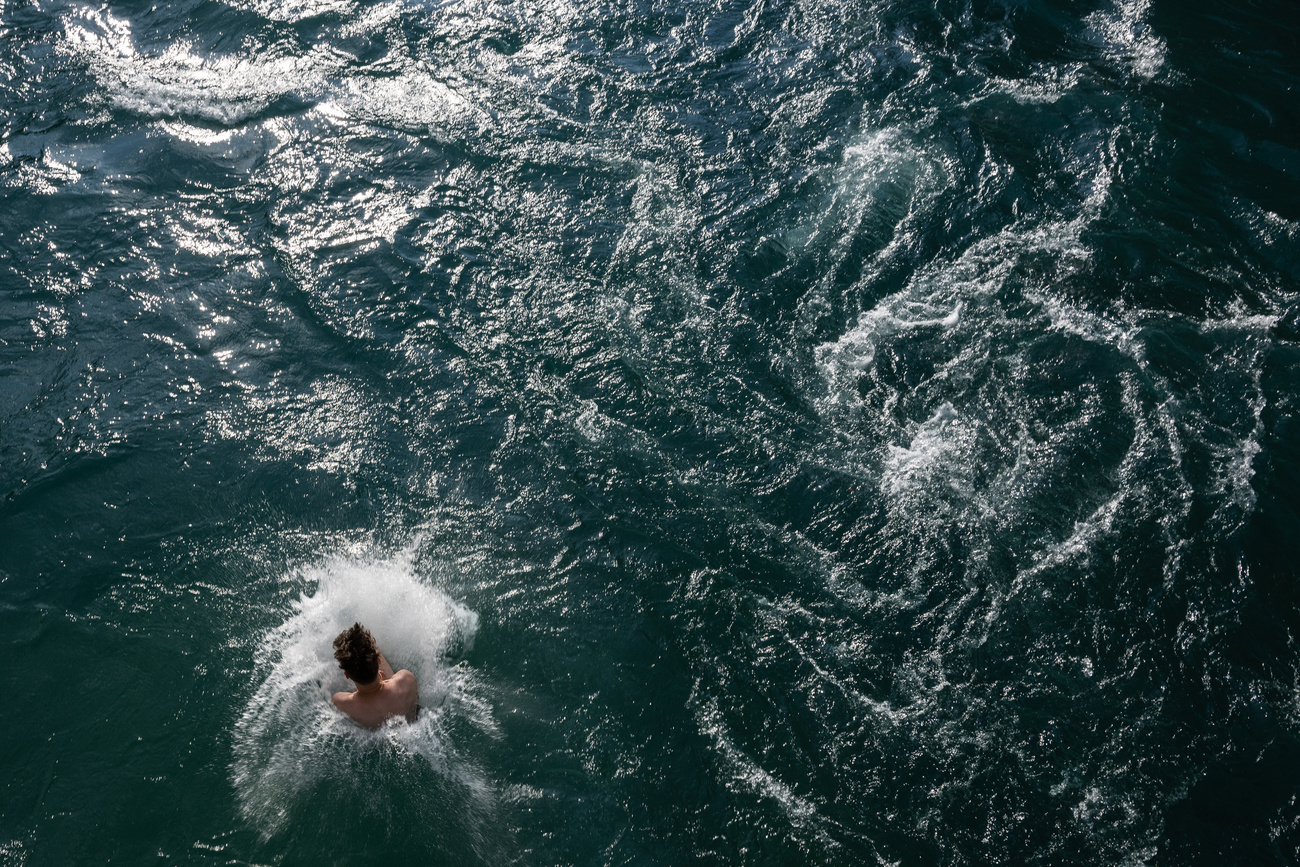
More
Men at higher risk of drowning in Swiss rivers
One must bear in mind, however, that there are no accurate figures for the risk of BASE jumping – the number of victims is loosely compiled from scarce local news and might overlook some cases. “The concept of dangerousness depends on the point of view of the analysis,” explained Stefan Siegrist, director of Swiss Council for Accident Prevention (BFU), in a special report about sportsExternal link published in August 2021.
“The lethality (number of fatalities per 10,000 people injured) is particularly high in swimming (13). In some sports, for instance BASE jumping, this value cannot be determined due to missing data. The most common fatal accidents involve mountain hiking (46),” it said.
More people, more trouble
REGA’s national air rescue centre organised 14,330 missions last year, a third more than the average for the past five years, said spokeswoman Karin Zahner.
REGA attributes this, among other things, to the fact that more and more people are practising leisure activities in the mountains, which is demanding a greater mobilisation of rescue teams to maintain the quality of services.
“On days when REGA expects an increase in operations volume, it parks additional rescue helicopters in eastern Switzerland and in the highlands of Bern, and there are additional staff working at the operations centre,” Zahner said.
The Bernese police have also increased their efforts. “In general, it can be said that the number of rescue operations in the mountains has steadily increased in recent years. Due to the change in leisure behaviour, many more people are going to the mountains,” they said.
However, neither organisation keeps specific statistics on tourist deaths in the mountains, which is why they can’t provide figures or comment on cases.
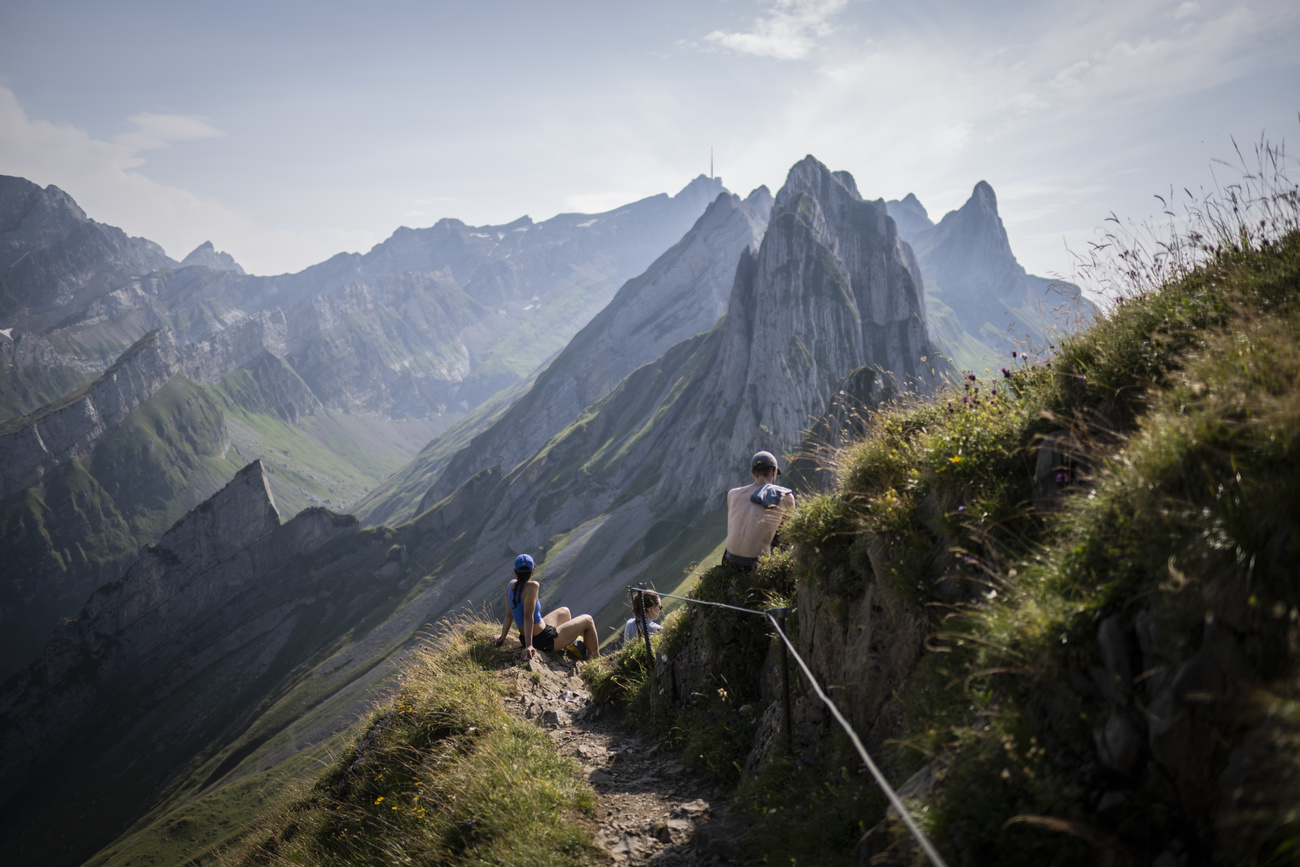
More
Mountain accidents in Switzerland: the figures
Self-regulation
But if the practice of adventure sports in the mountains has increased – leading to more accidents – and other sports such as swimming and hiking result in more deaths, is BASE jumping’s bad reputation unfair?
Marcel Geser, president of the SBA, thinks so and is committed to making the sport safer. With 530 registered members, the non-profit association advocates for the adoption of security protocols to let these adrenaline junkies continue to jump.
“It would be extremely difficult to ban BASE jumping in Switzerland,” he says. “You can’t put a police officer at every BASE exit point and wait for someone to come. It’s much better to find solutions and regulate the sport where necessary. In some countries BASE jumping is illegal and BASE jumpers have to jump at night or evade rangers. This makes the sport much more dangerous and has had fatal consequences for the jumpers.”
The SBA requires those who want to jump in the Lauterbrunnen and Walenstadt region to buy an annual landing card costing CHF40 ($40).
“Of the CHF40, CHF25 goes to local farmers to get permission to land in their fields and CHF15 goes to the SBA. With the money we earn from the sale of the landing cards we do all the maintenance at exit points [to make jumping safe],” he explained.
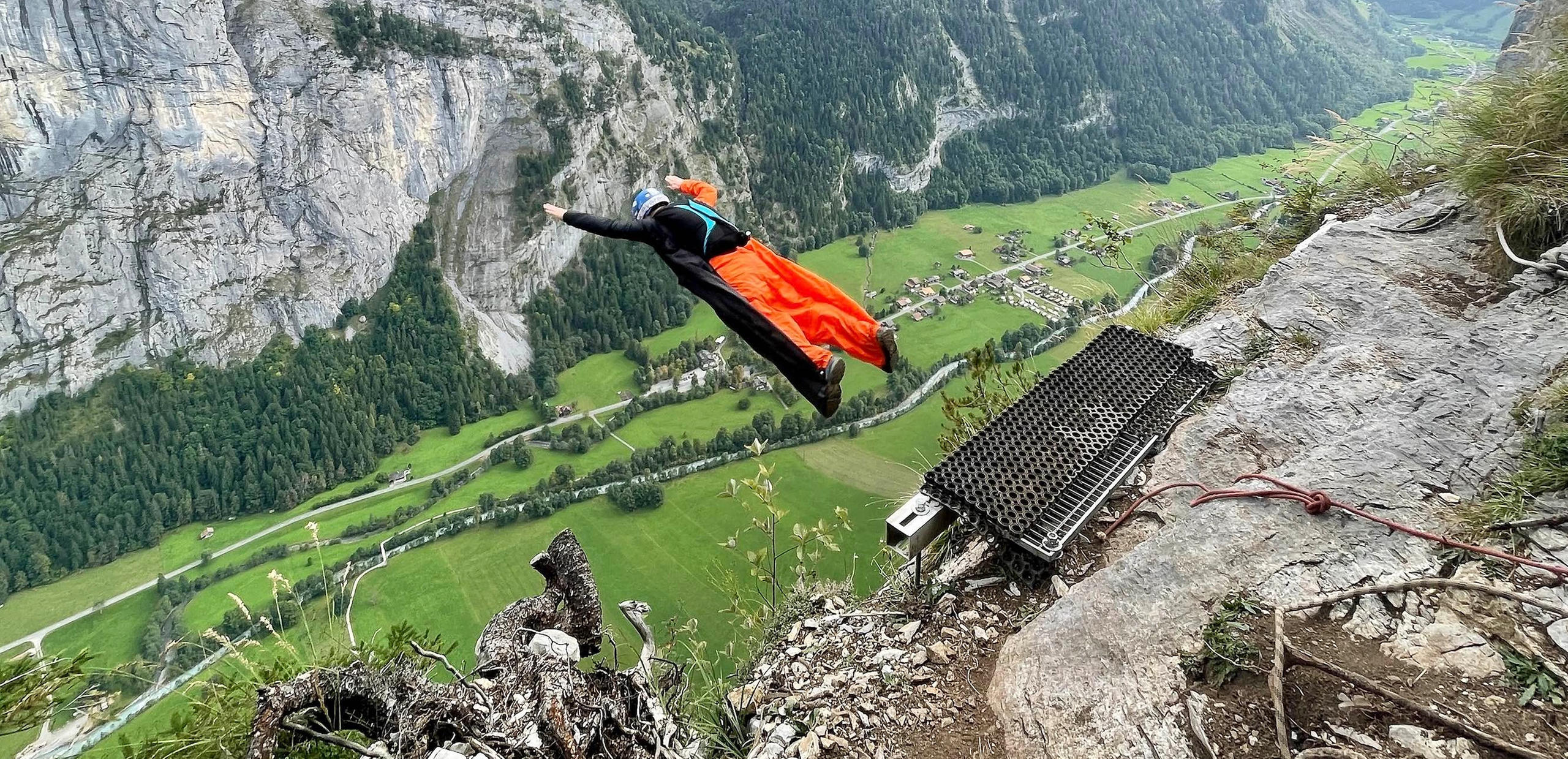
Emergency contacts
According to the association’s rules, in addition to buying the landing card it is also mandatory to register emergency contacts – so family members can be notified in the event of an accident – and to call a hotline to inform Air-GlaciersExternal link of the imminent jump.
Air-Glaciers, the main operator of helicopter flights in the region, has the political power to push for a ban but has explicitly preferred not to do so.
“Yes, in principle Air-Glaciers could ban jumping. However, as long as the agreed rules are observed, we see no need for action. Also, we believe that the rules are better in terms of security. If the BASE jumpers simply jumped wildly without reporting anything to us, serious accidents would likely have happened,” says team member Christian Stähli.
The government, in response to the 2019 motion, cited the good work of associations as a reason for deciding not to ban the sport. “Since associative structures were formed, […] educational work has been carried out […] which has significantly reduced conflicts with residents and other users of the airspace,” it wrote.
Edited by Thomas Stephens
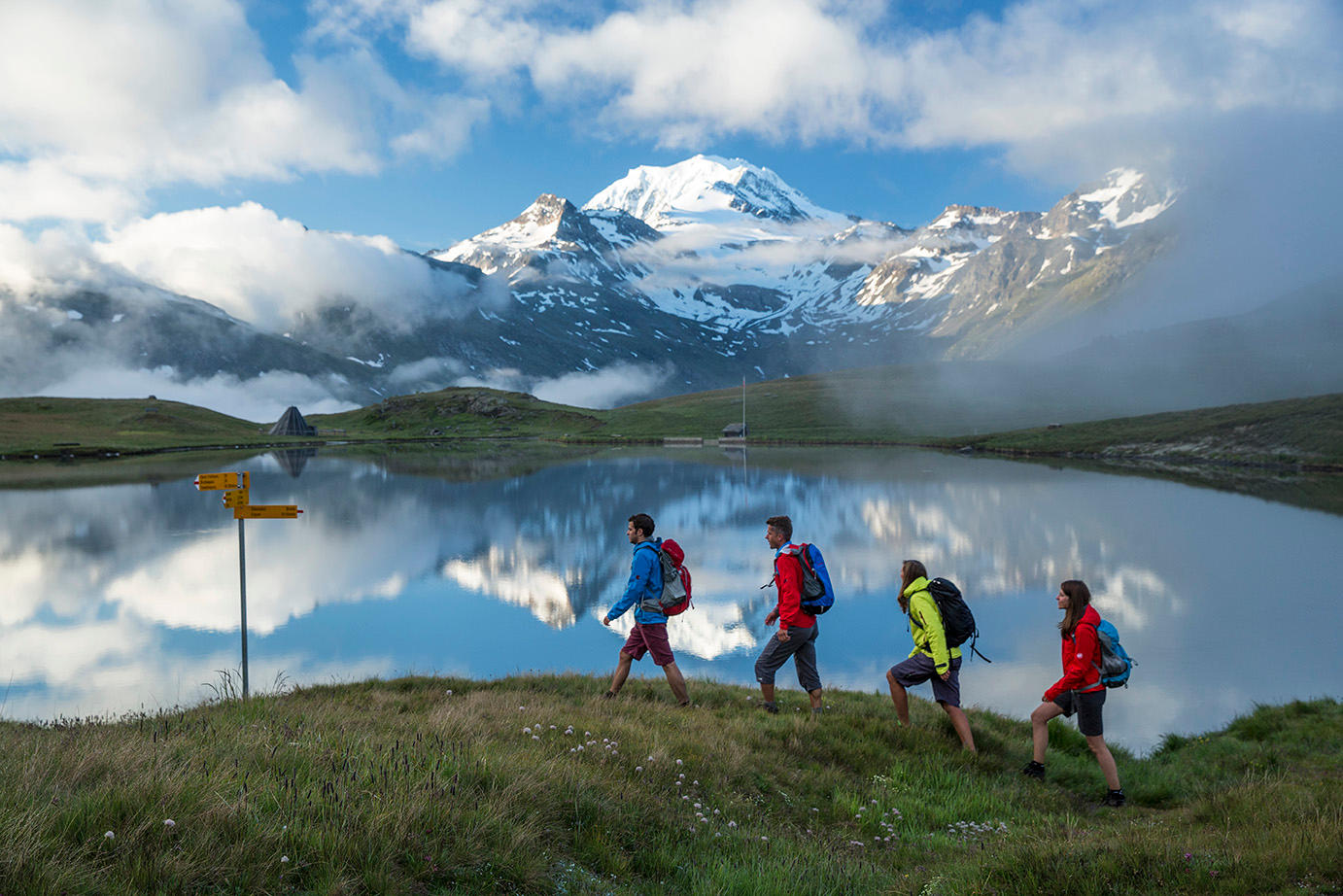
More
What you need to know about hiking in Switzerland
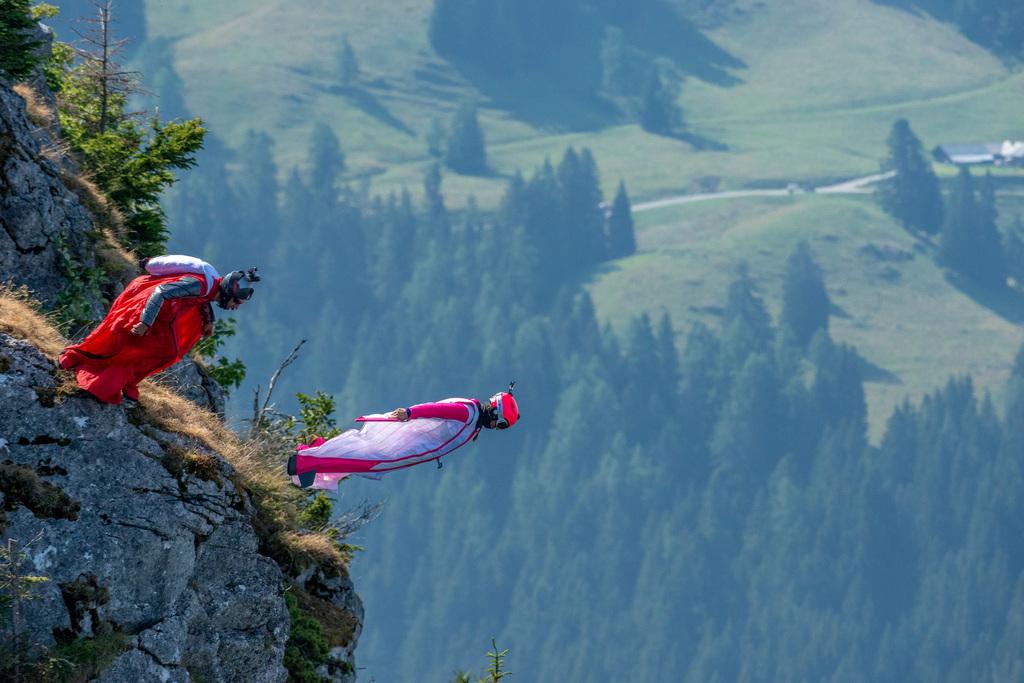
More
In Switzerland, look before you leap

In compliance with the JTI standards
More: SWI swissinfo.ch certified by the Journalism Trust Initiative



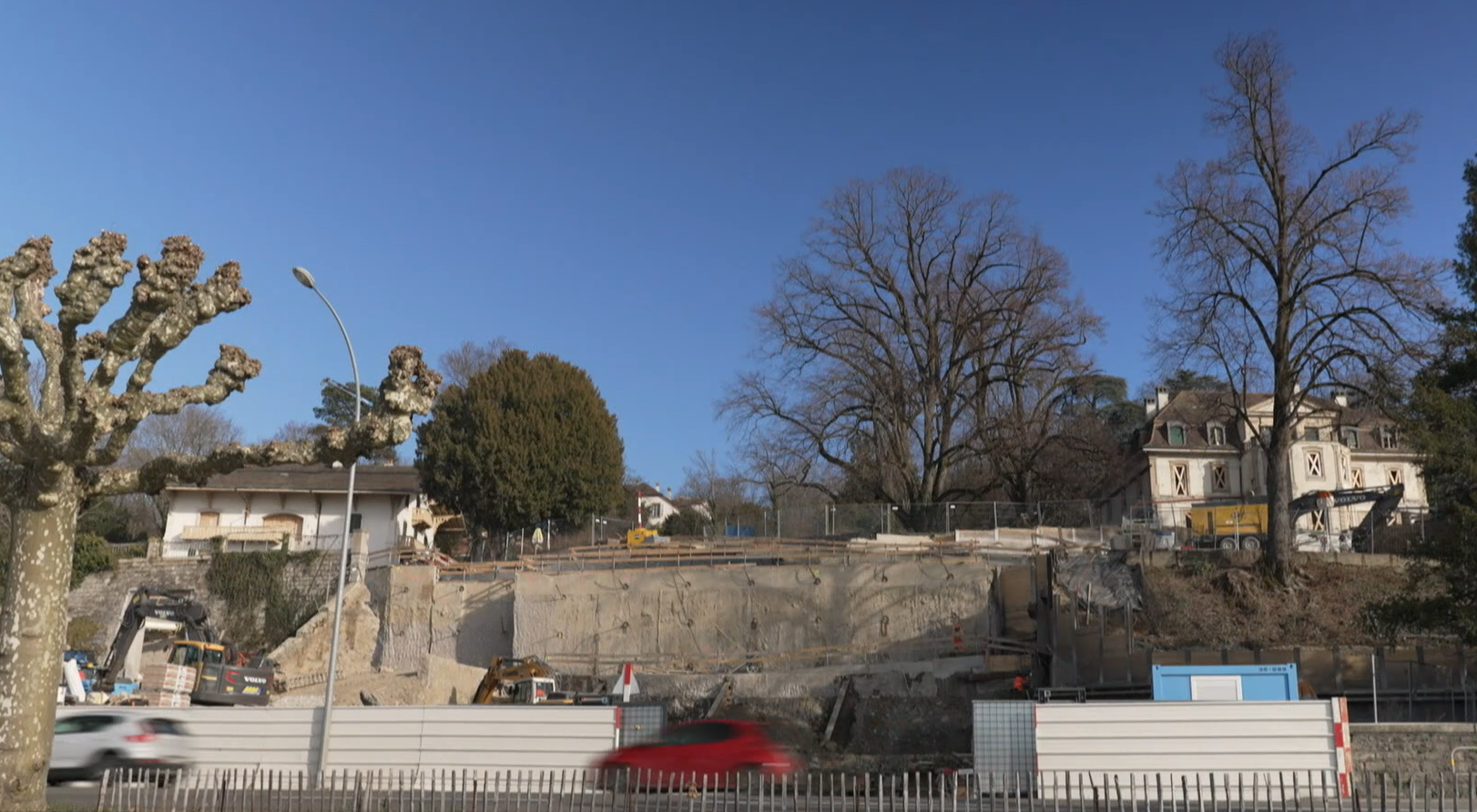




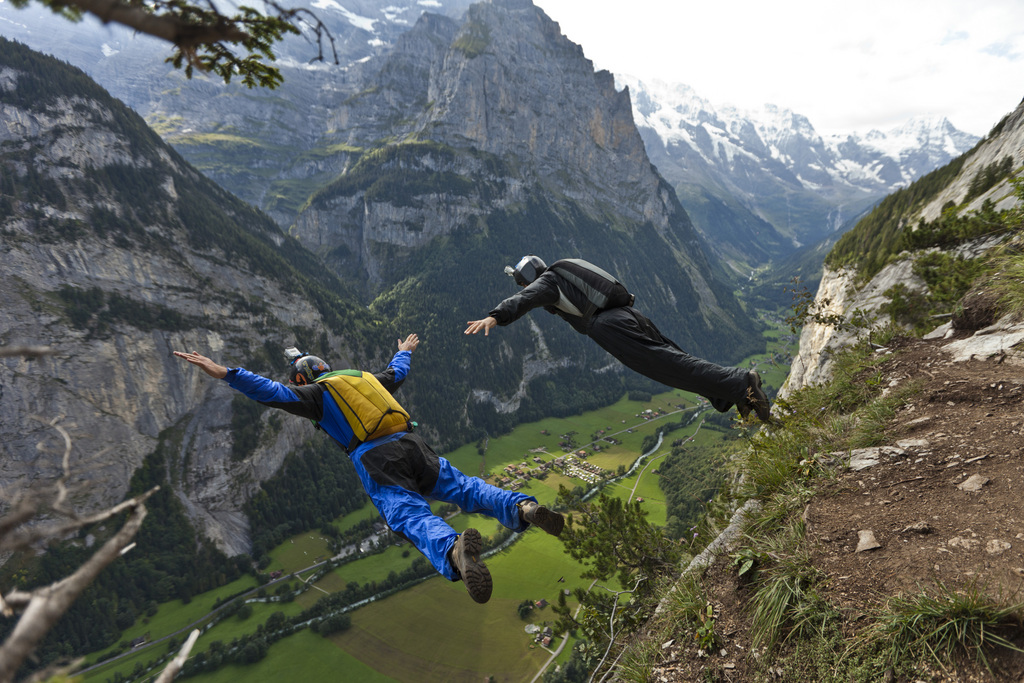

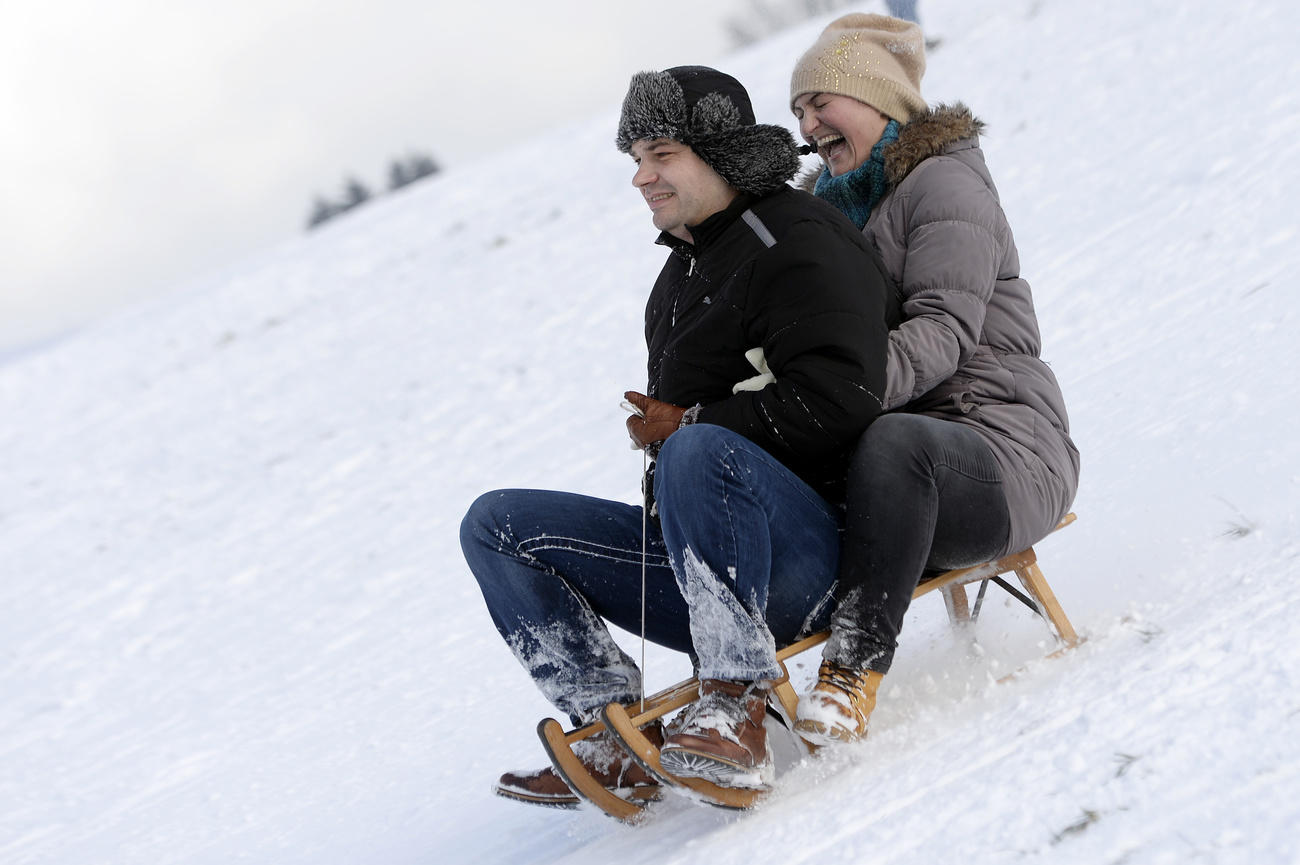


You can find an overview of ongoing debates with our journalists here . Please join us!
If you want to start a conversation about a topic raised in this article or want to report factual errors, email us at english@swissinfo.ch.